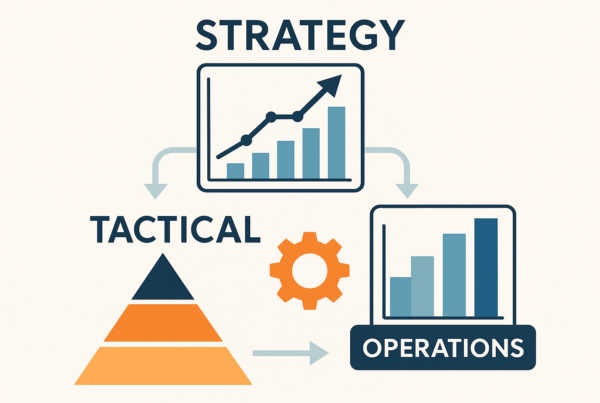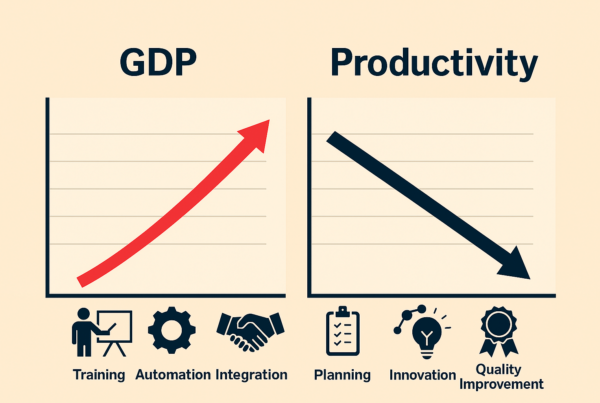As a supply chain and business advisor with clients in the SMME sector, I often get asked about business plans. Some of the common questions are:
- What exactly is a business plan?
- Why should I complete a business plan?
- Do I need a business plan if I do not need funding?
- What goes into a business plan?
- How detailed should this plan be?
The Business Plan
I will answer the first three questions in this section. The formal definition is:
“A business plan is a formal written document containing business goals, the methods on how these goals can be attained, and the time frame within which these goals need to be achieved” – Wikipedia
The focus of completing a business plan should be to identify your business path – it should include any obstacles, challenges and opportunities and how you intend to overcome them. A golden rule that I tell many entrepreneurs is that whatever you put into this plan, you must be able to answer “the why!” – support your contents with validated words and numbers.
The purpose of a business plan is not to enable you to only get funding – it is first and foremost a planning blueprint for yourself.
Completing a Business Plan
There are multiple formats describing the typical headings that a business plan should contain. Honestly, they are all very similar. It is the content and level of detail that makes or breaks a business plan. Correct guidance and coaching from a professional will lead you towards the correct inputs which will result in a business plan that is accurate, robust and aids you in decision-making. It is a forward-looking plan that can be completed for a predetermined period of time. For a simple micro business (example: grass cutting), I would recommend at least 12 months and for a larger more complicated business I would suggest upwards of 3 years.
A business plan should be completed with the intention of it becoming your business planning blueprint and is something that you use to assess your ideas in a holistic manner. There is not correct length that the plan should be – it will be a complete document when it has answered all the questions under the various headings and serves its purpose. It is like completing a puzzle one piece at a time until you see the whole picture. Remember that all the headings are interconnected.
The typical headings that I would recommend you include are:
- Executive Summary
- Company Description
- Product Offerings
- Market Analysis
- Competitive Analysis
- Business Team
- Strategy, Tactical and Implementation Plan
- Financial Planning (forecasts)
1. Executive Summary
This is the 1 or 2 pages that must grab the readers’ interests. It must include:
- What you intend selling (product or service)?
- Why you think it is a viable idea?
- How you intend to provide this service or product – include the resources you will need?
- When you plan on starting?
- Who will be supporting you?
2. Company Description
The company description will describe what you are all about and what you stand for. You will need to outline your goals and include some timelines on when you aim to achieve those goals. The other sections in the document will explain the ‘how’ part of achieving them. You can then assess them to ensure they are realistic. You have to be able to state what makes you unique and how you will achieve this uniqueness. Describe your customer base. Distinctiveness is what attracts customers.
3. Product Offerings
You will need to describe your product or service in a high level of detail here. Include relevant information to support the description (example: drawings, models, etc.). The description must include what makes this product unique and what value it will add. It must link up with the customer base you are targeting with the reader being able to see how the product will appeal to the target customer. You will need to demonstrate the appeal the product will have, the perceived product cost and value that the customer will get. The product offerings section must show how the product and customer links together and must also be supported by the marketing and sales plans.
4. Market Analysis
Market analysis is your opportunity to prove both to yourself and any potential funders that you understand the market and your customers. It must prove that you understand who you are targeting and why. Show that you have the right product targeting the right customers. It must also reflect important aspect such as the market size, pricing, product description/qualities, the players in the market and how you can penetrate that market. Include the market share that you want to target across a period of time. It must highlight what you will be up against.
Market analysis becomes an input into the financial projections. To project expected revenue, you will need to forecast expected volume sales. Remember my previous comments, include both words and numbers. A common pitfall is when individuals use numbers that are not validated or are overly optimistic because they are emotionally attached to an idea.
5. Competitive Analysis
The market analysis leads to competitive analysis, where you will need to describe the market or environment that you intend to compete within. Some of the points to include are:
- Complete a SWOT analysis (Strengths, Weaknesses, Opportunities & Threats)
- Porters 5 forces model
- The marketing pillars
6. Business Team
Highlight the human resources and skills that you will need in your business. Do not complete a fancy organogram to make it look impressive as this could lead to high salary costs. It is really about you deciding what skills you need and how you are going to acquire them. It could be that you choose to have some full-time and part-time resources. You will need to balance what you need and the costs associated with them.
7. Strategy, Tactical and Implementation Plan
7.1 Product Offering Plan
Describe in detail what you are planning to sell and the benefits of the product. It is your opportunity to convince the reader that what you are offering is what they – and what many other customers – want. You need to outline the route to market and the supply chain activities involved – which will include purchasing, converting the materials into finished goods and how you will store and transport them to the customer. You will need to prove to both yourself and potential investors that you understand your product and how you intend on supplying this product. It will also help you to do the product costings, break-even point calculations, cash flow requirements, Return on Investment (ROI), etc.
7.2 Marketing and Sales Plan
Include how you plan to attract your customers and via what platforms you intend on doing this (example: social media, newspaper adverts, radio, etc.). If you truly understand your product, customer base and market from the previous sections then you would have no issues deciding how to get them to buy your product. You could decide on selling via an e-commerce store, having sales representatives, have a store at a mall, going house-to-house, etc. Your selling methods will also enable you to calculate the cost of the marketing and sales plan which will feed into the financials and costs of doing business.
8. Financial Planning (forecasts)
8.1 Financial Projections
At a high level your projects must include the following. Projections can be done in weekly or monthly buckets. The numbers must help you prove why you are a safe bet to investors:
- Sales volumes
- Selling price
- Revenue generated
- Cost of sales
- Fixed, variable, direct and indirect costs
- Profit
- Break-even analysis in volume and value
- Show your targets and timelines
- How do you intend on collecting your cash?
- Show your cash flow. Poor cash flow management is one of the key reasons for business failure.
8.2 Funding Requirements
If you need funding, this section will describe the amount you need and your justification. You will need to convince the reader on the return on investment and why it is a safe investment. You will also need to specify the timings and amounts that you require. I would strongly suggest that you complete the thought process here, even if you don’t need external money. After all, it is your hard-earned money.
Conclusion
I have included the typical headings and contents of a business plan which will enable you to get going. Over and above that, I hope that I have encouraged you to not jump into something without planning. A business plan is a useful planning tool which will help you frame your thoughts and increase your likelihood of success. Remember that a business plan does not have to be a tedious and time-consuming process which results in a lengthy document. Rather, see it as a dynamic document that becomes your guiding star.
“If you fail to plan, you are planning to fail”
– Benjamin Franklin
Author
Dr Kenneth Moodley is an experienced supply chain and business professional with over 25 years’ experience. He has a demonstrated history of working with both big corporates (example: Unilever & The South African Breweries) and SMME’s (Productivity SA) in various industry sectors as a senior Supply Chain Specialist, Leader and Business Coach. In addition to his supply chain experience, he is a skilled business turnaround strategist and is a registered senior business rescue practitioner.





